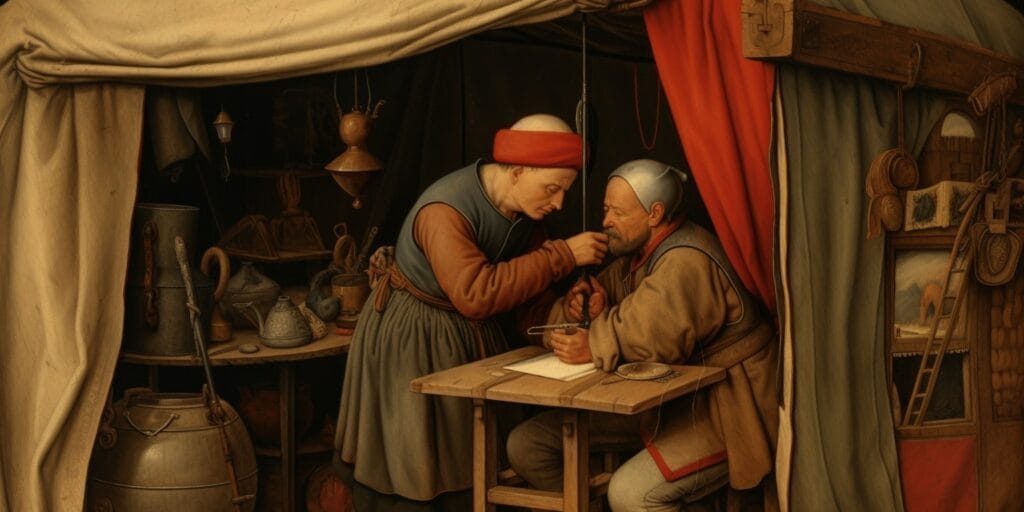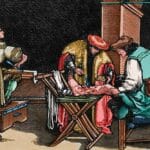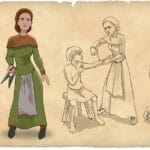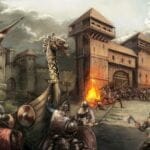Imagine a world where your barber also performed surgeries. This was the reality during the Middle Ages when barber-surgeons, the healthcare providers of their time, offered everything from haircuts to complex medical procedures. Despite facing prejudice due to their work with blood and surgery, these skilled individuals laid the groundwork for modern medicine. Let’s delve into their fascinating world.
Barbers in Medieval Times
Medieval barbers were far more than just hairstylists. They were skilled surgeons, essential healthcare providers, and even battlefield medics.
From Ancient Roots to Medieval Surgeons
The tradition of barbers performing medical procedures dates back to ancient civilizations like Egypt, Greece, and Rome. This practice continued into the medieval period in Europe, where barber-surgeons played a vital role in society.
Learning the Trade: More Than Just a Haircut
Becoming a barber-surgeon required rigorous training. They had to master hairdressing techniques alongside complex medical procedures, including surgery, earning the trust and respect of their communities. Did you know that Theodoric of York was believed to be the first trained barber with a medical background? He was very influential in the development of surgical techniques and tools that are still being used today.
The Swiss Army Knife of Medieval Healthcare
These multifaceted professionals were the go-to source for a surprisingly wide range of needs. They provided haircuts, shaves, tooth extractions, and even amputations. During wartime, they served as battlefield medics, treating injuries and providing essential medical care to soldiers.
Shaping the Future of Medicine
Barber-surgeons were pioneers in medicine. Their hands-on experience and generational knowledge formed the foundation of many modern medical practices. Over time, barbering and surgery branched out into separate professions, each specializing in its respective field. However, the legacy of these medieval practitioners lives on, a testament to their remarkable skills and the evolving nature of healthcare.
Who Were Medieval Barbers-Surgeons?
Medieval barber-surgeons were the jacks-of-all-trades in healthcare. They provided a wide array of services, from haircuts and shaves to tooth extractions and surgeries. Imagine going to your barber for a surgery today!
With doctors and specialists scarce, these individuals were the primary medical professionals for many people. They filled a crucial need, especially during times of war, when they became battlefield medics, tending to wounds and saving lives.
KEY LINE:
- Medieval barbers-surgeons emerged as versatile practitioners during the Middle Ages, uniting the arts of grooming and medical treatments.
- Their multi-faceted role extended from personal care (shaving, haircuts, dentistry) to medical procedures like bloodletting and minor surgeries.
- Barber-surgeons became the primary caregivers in Europe and beyond, specializing in wound care, tooth extractions, and other treatments during a time of limited medical resources.
- With combat prevalent in the medieval era, barber-surgeons expanded their practice to treat war-related injuries and wounds.
Key Takeaways:
- Barber-surgeons provided a wide range of services, including haircuts, shaves, tooth extractions, and surgeries.
- They were the primary healthcare providers for an extended period, particularly in Europe.
- Wartime transformed them into battlefield medics, treating various injuries.
What Services Did Medieval Barbers Provide?
Forget modern salons – we’re talking about medieval barbershops. These establishments were more like healthcare hubs, with barber-surgeons acting as all-in-one doctors, dentists, and surgeons.
One of their most popular services was bloodletting. While now considered ineffective, it was thought to cure everything from headaches to the plague. People believed that illnesses stemmed from an imbalance of bodily fluids, and barbers were tasked with restoring equilibrium.
For toothaches, people turned to barbers for extractions. This common procedure provided relief from pain and potential infections.
Barbers also excelled in wound care. Whether a cut, scrape, or something more serious, they cleaned and bandaged wounds, even stitching them when necessary.
Surprisingly, these medieval barbers also performed surgeries. They treated tumors, performed amputations, and conducted other procedures that would make even the bravest shudder. They were truly versatile when it came to the human body.
Key Lines:
- Medieval barbers-surgeons transcended mere aesthetics, offering rudimentary medical services including bloodletting, tooth extraction, and wound care.
- The role of barber-surgeons evolved from hairdressers to primary healthcare providers, due to the limited availability of specialized physicians.
- Barber-surgeons employed a range of surgical instruments, including lancets, forceps, scalpels, and saws, for various medical procedures.
- Their knowledge and techniques paved the way for the development of modern surgical practices, notably through the innovations of figures like Ambroise Paré.
So, the next time you think of a barber, remember the medieval barber-surgeons who were so much more than just hairstylists. They were pioneers of medical care in their time. To learn more about the fascinating tools they used, check out this article about tools used in the medieval period. If you’re intrigued by medical history, then you won’t want to miss this article about medieval surgery.
The Evolution of Barbering Tools and Techniques
Imagine a time when your barber was also your surgeon! In the Middle Ages, this was the norm. With limited medical knowledge, barber-surgeons emerged to fill the healthcare gap, providing services beyond haircuts and shaves. They treated wounds, extracted teeth, and even performed amputations.
Initially, their services were basic. However, as time passed, they became more skilled and daring, tackling more complex procedures like cataract removal and hernia repair. Their expertise grew alongside the development of specialized tools.
As barber-surgeons took on more challenging procedures, their tools evolved. Simple shears and combs were replaced with lancets for incisions, forceps for grasping, scalpels for delicate cutting, and even saws for amputations. These tools paved the way for modern surgical instruments.
Key Lines:
- Barber-surgeons emerged during the Middle Ages, combining the roles of hairdressers and minor surgeons due to the rudimentary state of medicine at the time.
- These practitioners played a crucial role in medieval healthcare, performing bloodletting, tooth extraction, and amputations for both wealthy and commoners alike.
- The skills of barber-surgeons evolved over time, with their surgical expertise expanding into complex procedures such as cataract removal and hernia repair.
- The legacy of barber-surgeons persists today in the training of modern surgeons, who still undergo rigorous training in anatomy and surgical techniques.
While barber-surgeons may no longer exist, their legacy endures in modern surgery. Today’s surgeons, like their predecessors, undergo rigorous training, reflecting the evolution of these intertwined professions.













Comments are closed.